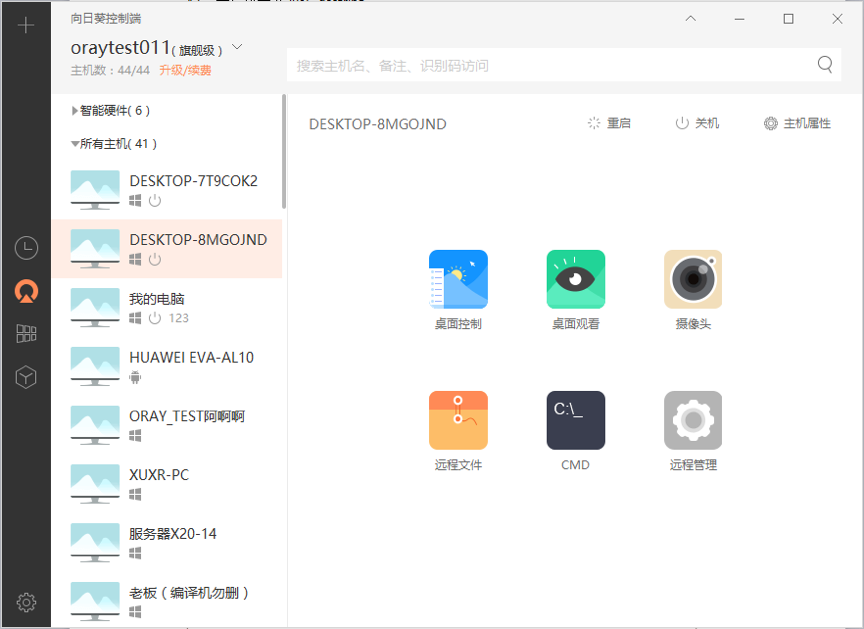作者:查志旺 ,向日葵远程控制软件前端开发工程师。
最近公司需要做向日葵远程控制软件跨平台项目,为了代码的可复用性,需嵌入跨平台脚本语言,我们选择了Lua,理由是Lua由标准C编写而成,几乎在所有操作系统和平台上都可以编译,Lua脚本可以很容易的被C/C++ 代码调用,也可以反过来调用C/C++的函数,今天就跟大家分享下c++与Lua交互的一些问题。
为了方便c++和lua的交互,我引进了LuaBridge。因为它源码简单易用,只有头文件,没有.cpp文件,不需要编译,只需要引用头文件即可,方便快捷。
下面我用vs2008工具写了一个win32控制台项目例子来讲解下c++和Lua简单的互调。
一、准备工作
从lua官网上下载最新的http://www.lua.org/download.html,下个最新的lua-5.3.4.tar.gz解压出来后可以直接拿源码编译成lib或者直接加入到项目中.我是直接把它放到项目中,编译的时候,会出现多个main函数入口的错误(移除对应的文件)。
下载LuaBridge,下载地址:https://github.com/vinniefalco/LuaBridge列表下的Source/LuaBridge是源码,Manual.html是帮助文档。
创建win32控制台项目test_lua把lua源码和LuaBridge头文件放入到项目目录下并添加到项目工程中。
二、编写代码
1、先引用Lua和LuaBridge头文件如下:
//引用c文件的头文件所以需要加上extern "C"
extern "C"
{#include "lua.h"#include "lauxlib.h"#include "lualib.h"
}
#include "LuaBridge\LuaBridge.h"2、然后创建test_lua类和一个子类代码如下:
class test_lua
{
public:test_lua(){m_test_string = "c++ test string";}~test_lua(){}
//test方法void test(int a,int b){printf("c++ test function %d+%d=%d\n", a, b, a+b);}//属性set方法void SetName(std::string name){m_name = name;}
//属性get方法,注意需要后面加conststd::string GetName() const{return m_name;}
//供lua调用方法,返回多个参数方法int cFunc(lua_State* L){
//返回参数1lua_pushstring(L,"str1");
//返回参数1lua_pushstring(L,"str2");
//返回参数个数return 2;}std::string m_test_string;std::string m_name;static int m_static_data;
};
//test_lua静态变量定义(静态变量在类内只是声明)
int test_lua::m_static_data;
//test_lua子类
class test_lua_child :public test_lua
{public:test_lua_child(std::string test):m_test_child_string(test){printf("call test_lua_child constructor\n");}~test_lua_child(){}std::string m_test_child_string;
};3、创建一个lua脚本文件a.lua内容为:
--lua 打印lua script
print("lua script")
--调用成员变量m_test_string(test_str为注册的名字)
print(test_lua.test_str)
--调用c++静态变量(需要加上test命名空间)
test.test_lua.static_data=12
print("static_data: "..test.test_lua.static_data)
--调用c++类test_lua属性name
test_lua.name="name_property";
print("name: "..test_lua.name);
--lua调用c++方法test_lua为c++类在lua的注册名,调用test方法
test_lua:test(3,4)--调用c++调用方法返回多个值
local ret1,ret2 = test_lua:cFunc()
print("ret1="..ret1.." ret2="..ret2)--创建test_lua_child对象
local test_lua_child = test.test_lua_child("test_string")
--调用其变量
print("child string:"..test_lua_child.test_child_string);
--调用父类的name属性
test_lua_child.name="child_name_property";
print("name:"..test_lua_child.name);--lua 方法加法
function lua_add_function(a,b)print("lua_add_function") return a+b;
end--lua 方法字符串加法(..是相加语法)
function lua_add_str_function(a,b)print("lua_add_str_function") return a..b;
end4、主函数编写
4.1、Lua的初始化和加载Lua的基本库
//初始化Lua (最后记得调用lua_close(lua_state)释放)lua_State* lua_state = luaL_newstate(); //加载Lua基本库luaL_openlibs(lua_state);4.2、用luabridge注册到lua中
在这里要注意的是多个类注册需要加一个namespace(test),且.endClass()后面不加分号
luabridge::getGlobalNamespace(lua_state).beginNamespace("test").beginClass<test_lua>("test_lua").addConstructor<void (*) (void)> ()//无参构造函数的注册.addData("test_str",&test_lua::m_test_string)//注册变量到lua.addStaticData("static_data", &test_lua::m_static_data)//注册静态变量到lua.addFunction("test", &test_lua::test)//注册test、方法到lua(addStaticFunction静态函数注册也类似).addProperty("name",&test_lua::GetName,&test_lua::SetName)//属性方法的注册(addStaticProperty静态属性方法也类似).addCFunction("cFunc",&test_lua::cFunc)//注册返回多个参数给lua的方法.endClass().deriveClass<test_lua_child, test_lua> ("test_lua_child")//子类的注册.addConstructor<void (*) (std::string)> ()//有参构造函数的注册.addData("test_child_string", &test_lua_child::m_test_child_string)//注册变量到lua.endClass().endNamespace();//创建test_lua对象
test_lua test;luabridge::setGlobal(lua_state, &test, "test_lua");//注册test_lua对象到lua注:test_lua也可以在lua创建,因为构造函数也注册到lua,如test.test_lua(),上面的a.lua脚本有子类test_lua_child的创建和调用其父类的属性方法
4.3、注册完成后,再返回看上面写的a.lua脚本就知道每个调用的意义,添加运行Lua脚本 代码然后执行,代码如下:
//运行lua脚本luaL_dofile(lua_state, "a.lua");
//关闭Lua
lua_close(lua_state);
编译执行结果为:
lua script
c++ test string
static_data: 12
name: name_property
c++ test function 3+4=7
ret1=str1 ret2=str2
call test_lua_child constructor
child string:test_string
name:child_name_property
4.4、c++调用lua方法,因为lua方法函数参数一样而且都是一个返回值,为了方便,采用模板形式(以两个参数为例)第一个参数(lua对象)和第二个参数(方法名)类型固定,后面参数用模板
template<typename R, typename T1, typename T2>R call(lua_State* lua_state,const char* name, T1 arg1, T2 arg2)
{
//读取方法名lua_getglobal(lua_state, name);
//判断是不是方法if (lua_isfunction(lua_state, -1)){
//压入参数
luabridge::Stack<T1>::push(lua_state, arg1);
luabridge::Stack<T2>::push(lua_state, arg2);
//执行函数(参数为lua对象、参数个数,返回值个数,出错返回)lua_pcall(lua_state, 2, 1, 0);}
//获取返回值
return luabridge::Stack<R>::get(lua_state, -1);
}
在运行lua脚本后面再加上如下调用代码:
//调用lua方法lua_add_functionint ret = call<int>(lua_state,"lua_add_function", 5, 6);//调用lua方法lua_add_str_function
std::string value = call<const char*>(lua_state,"lua_add_str_function","5", "6");printf("lua_add_function result:%d\n", ret);printf("lua_add_str_function result:%s\n", value.c_str());编译执行结果为:
lua script
c++ test string
static_data: 12
name: name_property
c++ test function 3+4=7
ret1=str1 ret2=str2
call test_lua_child constructor
child string:test_string
name:child_name_property
lua_add_function
lua_add_str_function
lua_add_function result:11
lua_add_str_function result:56
4.5、最后讲一下luaL_dostring
luaL_dostring跟luaL_dofile是一个作用,都是加载并运行lua脚本,只是对象不一样,看方法名就知道是一个是加载文件,另外一个是加载string,最后运行里面的lua脚本,luaL_dostring在lua嵌入到其他的脚本语言中经常用到,现在沿用上面的例子在lua_close之前加段代码简单说明下:
//定义lua脚本,调用test_lua类里的属性name并打印出来
std::string lua_string = "print(\"run lua string test_lua name:\"..test_lua.name)";
//加载string并运行
luaL_dostring(lua_state, lua_string.c_str());
编译运行得到的结果为:
run lua string test_lua name:name_property说到嵌入问题,现在做的向日葵远程控制软件的界面用的是xml,这里就涉及到lua嵌入到xml中,由于lua特性,在其他的系统这些xml都可以用,所以以后再也不用担心加个新界面每个系统还得重新再搞一套,lua嵌入xml中原理就是把lua脚本加入到一个节点中如:
<script><![CDATA[
--lua代码
print("run lua script")]]></script>解析xml对应的script节点内容,然后用luaL_dostring去加载运行就可以了。
最后配上现在的向日葵界面图
向日葵客户端:
向日葵控制端:
三、小结
希望通过上面的简单例子可以帮助大家快速上手c++嵌入lua脚本,从上面代码也可以看出lua和c++很容易互相调用,lua与c++是通过操作虚拟栈来交互的,例如上面调用lua方法,就是c++先把方法放入到栈顶,然后lua从栈顶取值操作,然后把结果又放回到栈顶,c++再从栈顶取值,lua调用c++也类似,就是c++把需要调用的先注册到lua中,lua就可以调用,想了解更多lua基本语法和原理的可以具体查看lua中的manual.html,LuaBridge的其它用法也可查看LuaBridge的manual.html。


)






![android内置t卡中预制资源,[FAQ17514][Recovery]Recovery mode FAQ搜寻指南](http://pic.xiahunao.cn/android内置t卡中预制资源,[FAQ17514][Recovery]Recovery mode FAQ搜寻指南)







...)



